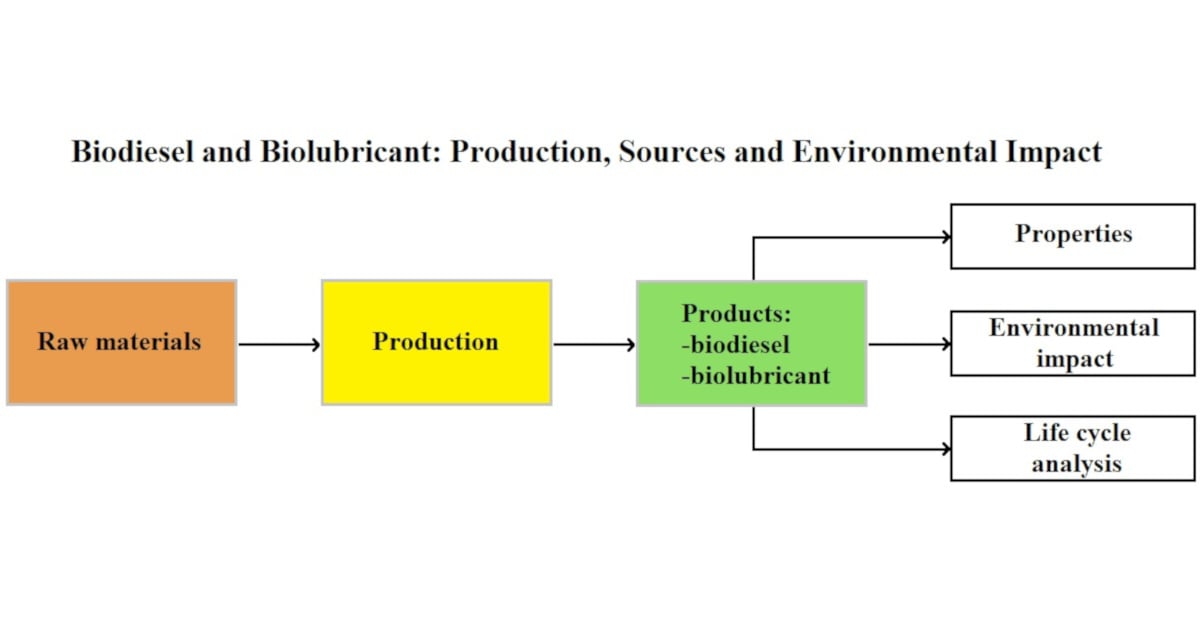- 3.2Impact Factor
- 7.3CiteScore
- 17 daysTime to First Decision
Biodiesel: Production, Sources and Environmental Impact
This special issue belongs to the section “A4: Bio-Energy“.
Special Issue Information
Dear Colleagues:
Biodiesel and biolubricants are widely used in industrial production respectively. In the energy field, biodiesel, as a renewable fuel with high oxygen content, has the advantages of improving the combustion process, reducing soot and sediment, and is a more sustainable and environmentally friendly fuel alternative. Compared with traditional lubricants, biolubricants have the advantages of being degradable and less polluting, which can effectively reduce the emission of atmospheric pollutants and greenhouse gases. Biodiesel is used in transportation, power generation, heating, agricultural machinery and other fields. Biolubricants can replace traditional lubricants in engine oil, hydraulic oil, compressor oil, gear oil, grease and other industrial applications.
This special issue focuses on the precursors, production preparation, chemical/biological decomposition, energy generation and consumption, and effects on the environment of biodiesel and biolubricants. We hope to collect and organize research in related directions and bring cutting-edge research and insights to scholars and readers. Relevant research topics include but are not limited to new raw materials and methods for biodiesel and biolubricant production; life cycle assessment (LCA), and techno-economic analysis. Original research papers, communications and review articles will be considered for submission.
Prof. Dr. Egle Sendzikiene
Guest Editor
Manuscript Submission Information
Manuscripts should be submitted online at www.mdpi.com by registering and logging in to this website. Once you are registered, click here to go to the submission form. Manuscripts can be submitted until the deadline. All submissions that pass pre-check are peer-reviewed. Accepted papers will be published continuously in the journal (as soon as accepted) and will be listed together on the special issue website. Research articles, review articles as well as short communications are invited. For planned papers, a title and short abstract (about 250 words) can be sent to the Editorial Office for assessment.
Submitted manuscripts should not have been published previously, nor be under consideration for publication elsewhere (except conference proceedings papers). All manuscripts are thoroughly refereed through a single-blind peer-review process. A guide for authors and other relevant information for submission of manuscripts is available on the Instructions for Authors page. Energies is an international peer-reviewed open access semimonthly journal published by MDPI.
Please visit the Instructions for Authors page before submitting a manuscript. The Article Processing Charge (APC) for publication in this open access journal is 2600 CHF (Swiss Francs). Submitted papers should be well formatted and use good English. Authors may use MDPI's English editing service prior to publication or during author revisions.
Keywords
- non-edible fuel sources
- biodiesel production
- biolubricant production
- biodiesel properties
- biolubricant properties
- environmental impact
- life cycle analysis

Benefits of Publishing in a Special Issue
- Ease of navigation: Grouping papers by topic helps scholars navigate broad scope journals more efficiently.
- Greater discoverability: Special Issues support the reach and impact of scientific research. Articles in Special Issues are more discoverable and cited more frequently.
- Expansion of research network: Special Issues facilitate connections among authors, fostering scientific collaborations.
- External promotion: Articles in Special Issues are often promoted through the journal's social media, increasing their visibility.
- e-Book format: Special Issues with more than 10 articles can be published as dedicated e-books, ensuring wide and rapid dissemination.

